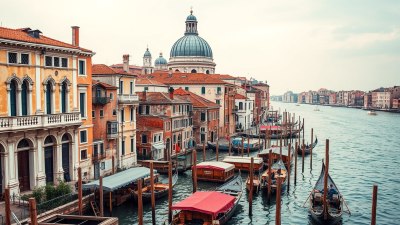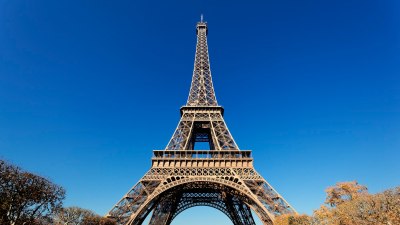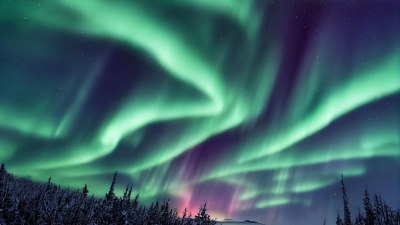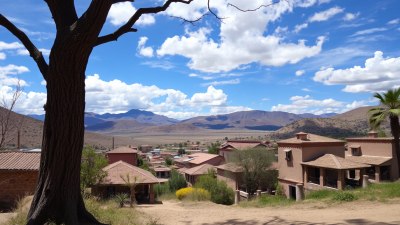Traveling the World’s Slowest Disappearances
Explore the world's slowest disappearances, from sinking cities to vanishing cultures.

Traveling the world’s slowest disappearances is an extraordinary journey that transcends time, culture, and geography. This trip unveils the hidden stories of places that slowly fade from existence, whether due to climate change, urbanization, or cultural erosion. Each destination tells a tale of resilience and loss, intertwining the past with our unpredictable future.
One of the most prominent examples of a slow disappearance is the city of Venice, Italy. Often referred to as the 'City of Canals', Venice is famous for its stunning architecture and mesmerizing waterways. However, this enchanting city faces a dire threat from rising sea levels and subsiding land, prompting scientists to warn that it could be uninhabitable by the end of the 21st century. Travelers visiting Venice can witness the beauty of its landmarks like the Saint Mark's Basilica and the Rialto Bridge, but they should also reflect on the inevitable changes that might engulf this jewel of the Adriatic.
The Struggles of Venice
The combination of climate change and human activity has made the situation in Venice precarious. Frequent flooding, known as 'acqua alta' or high water, has become more common, affecting daily life and threatening the structural integrity of its historic buildings. Efforts have been undertaken to build barriers and drainage systems, but competing economic interests and tourism pressures complicate the preservation efforts. The slow disappearance of Venice serves as a poignant reminder of how urban environments often struggle against nature's whims and human-induced challenges.
Traveling to the Maldives provides yet another perspective on this issue. This tropical paradise, composed of 26 atolls, is renowned for its white-sand beaches and vibrant marine life. Yet, projections indicate that by 2050, parts of the Maldives could be submerged due to rising sea levels. As one of the lowest lying nations on Earth, the Maldives is a stark illustration of the planet's vulnerability to climate change. The government has invested in climate resilience plans, including building artificial islands, but the reality remains grim for future generations. Visiting the Maldives allows travelers to experience its breathtaking beauty while raising awareness about environmental sustainability.
Maldives' Cultural Heritage
Beyond its geographical vulnerabilities, the Maldives also faces threats to its cultural heritage, as globalization spreads Western values and consumer habits. Traditional music, dress, and fishing practices are increasingly overshadowed by global trends, leading to a cultural homogenization that could erase unique Maldivian identities. Travelers have the opportunity to engage with local communities and partake in traditional experiences, ensuring that these cultures are not forgotten as they face slow disappearances in various forms.
Another compelling example is the town of New Orleans, Louisiana, which has been battling the threat of subsidence and hurricanes, particularly after Hurricane Katrina in 2005. The city, often celebrated for its rich cultural heritage, jazz music, and unique culinary scene, is experiencing slow but relentless changes that threaten its very essence. The city's famous French Quarter is sinking, and while restoration efforts promote tourism, the socio-economic landscape has shifted. Visiting New Orleans, travelers can enjoy the music and cuisine while also contemplating the fragility of communities that face displacement and disruption.
The Spirit of New Orleans
In New Orleans, the fight continues against the slow disappearance of neighborhoods and traditions. As waters rise and storms become more severe, residents advocate for changes in urban planning and emergency response strategies. The city's vibrancy and cultural resilience shine through, highlighting the importance of collective effort to preserve what’s left of the heritage. Travelers can immerse themselves in local celebrations like Mardi Gras, engaging with the community that holds its identity dear despite the mounting challenges.
Beyond the coastlines, the world’s slowest disappearances also manifest in indigenous cultures and languages. The loss of native tongues due to colonization and globalization is one of the most profound yet silent tragedies. For example, the Navajo Nation in the United States holds its language, Diné Bizaad, as a critical part of its identity. However, younger generations face pressure to conform to English and other dominant languages, risking the erasure of their linguistic heritage. Visiting tribal lands not only offers insight into the Navajo way of life but supports initiatives that promote language revitalization, preserving an invaluable part of human history.
Language and Identity
Efforts to revitalize indigenous languages are underway globally. Organizations are embracing technology to elevate awareness of endangered languages and working with communities to create educational programs. Tourists can participate in cultural tours that foster appreciation for the language and customs, ensuring they are not lost as younger generations navigate identity in a rapidly changing world.
The Arctic region represents another fascinating case of slow disappearance tied to environmental changes. As global temperatures rise, ice caps are melting, leading to alterations in ecosystems and traditional lifestyles for indigenous communities like the Inuit. The Arctic's vast beauty is undergoing transformation, with wildlife patterns shifting, and traditional hunting practices becoming increasingly challenging. Visiting the Arctic allows travelers to witness the breathtaking landscapes while understanding the significant changes affecting the local communities and their ways of life.
Environmental Impact and Awareness
Traveling in the Arctic can be a double-edged sword; while it raises awareness about climate change, increased tourism can also worsen environmental degradation. As such, sustainable practices for travel are paramount to reduce the impact on delicate ecosystems. Engaging with local guides and organizations that prioritize conservation can enhance experiences while promoting the protection of these ecosystems.
In Asia, the disappearance of the ancient city of Petra in Jordan, carved into rose-red cliffs, illustrates a different aspect of slow disappearance. Although it has gained fame as a UNESCO World Heritage site and a symbol of ancient ingenuity, Petra faces deterioration due to environmental factors and tourism pressure. Preservation efforts are essential to maintain the significance of this historical treasure, and visitors must strike a balance between admiration and responsibility. Exploring Petra allows one to step back in time, where one can marvel at the architectural prowess while acknowledging the fragility of heritage sites in the modern era.
Preserving Heritage for Future Generations
Petra's iconic structures demand attention and care, with travelers encouraged to engage respectfully with the environment and contribute to conservation funds that support ongoing preservation initiatives. Through responsible tourism, travelers can help reduce the negative impacts that threaten historic locations across the globe.
The world's slowest disappearances extend to vibrant ecosystems, like the Great Barrier Reef in Australia. Significant coral bleaching due to climate change has put this natural wonder at risk. As one of the planet's most astonishing ecosystems, the reef faces ongoing challenges due to rising temperatures and ocean acidity. This consequently influences marine biodiversity and disrupts the balance of marine habitats. Travelers diving in the Great Barrier Reef can experience its beauty firsthand but must also become stewards of the environment, advocating for marine conservation initiatives that protect this delicate ecosystem.
Marine Conservation
Awareness and educational programs focused on ocean health are vital as part of responsible travel practices. Engaging in reef restoration projects can foster a connection between visitors and this beautiful underwater world, empowering them to contribute to its preservation. By understanding the environment, travelers can make informed choices that assist in combating the slow disappearance of precious natural habitats.
Furthermore, the phenomenon of slow disappearing cities extends to those abandoned or undergoing drastic transformations. For instance, the ghost town of Pripyat, Ukraine, stands as a testament to the Chernobyl disaster, which caused mass evacuation and the slow deterioration of the area. With nature reclaiming what was once bustling, Pripyat encapsulates a poignant blend of history and environmental reclamation. Visitors to Chernobyl can grasp the consequences of human error juxtaposed against the soothing force of nature, compelling them to reflect on the delicate relationship between human activity and the environment.
Historical Reflection in Abandoned Towns
Pripyat serves as both a warning and an example of the resilience of nature. Travelers can learn about the history of the accident while witnessing how ecosystems adapt and thrive, even in the aftermath of destruction. This landscape epitomizes the paradox of disappearance and rebirth, compelling visitors to ponder the long-term impacts of humanity on the environment.
In conclusion, exploring the world's slowest disappearances forms a journey not solely for adventure but for consciousness, reflection, and change. From the sinking streets of Venice to the endangered languages of indigenous peoples, each destination tells a powerful story of resilience against overwhelming odds. As travelers traverse these sites, they forge connections not just with landscapes but with rich histories and cultures threatened by various forces. By engaging mindfully and promoting conservation, every traveler can join the conversation, championing the global effort to preserve what remains. In doing so, this collective journey transcends the simple act of traveling; it becomes a sacred obligation to protect our world's diverse tapestry of life and heritage, fostering a future where these tales of beauty and diversity can continue to thrive. The slow disappearance of these places and cultures reminds us all how interwoven our stories are, urging us to take action before they fade away forever.











